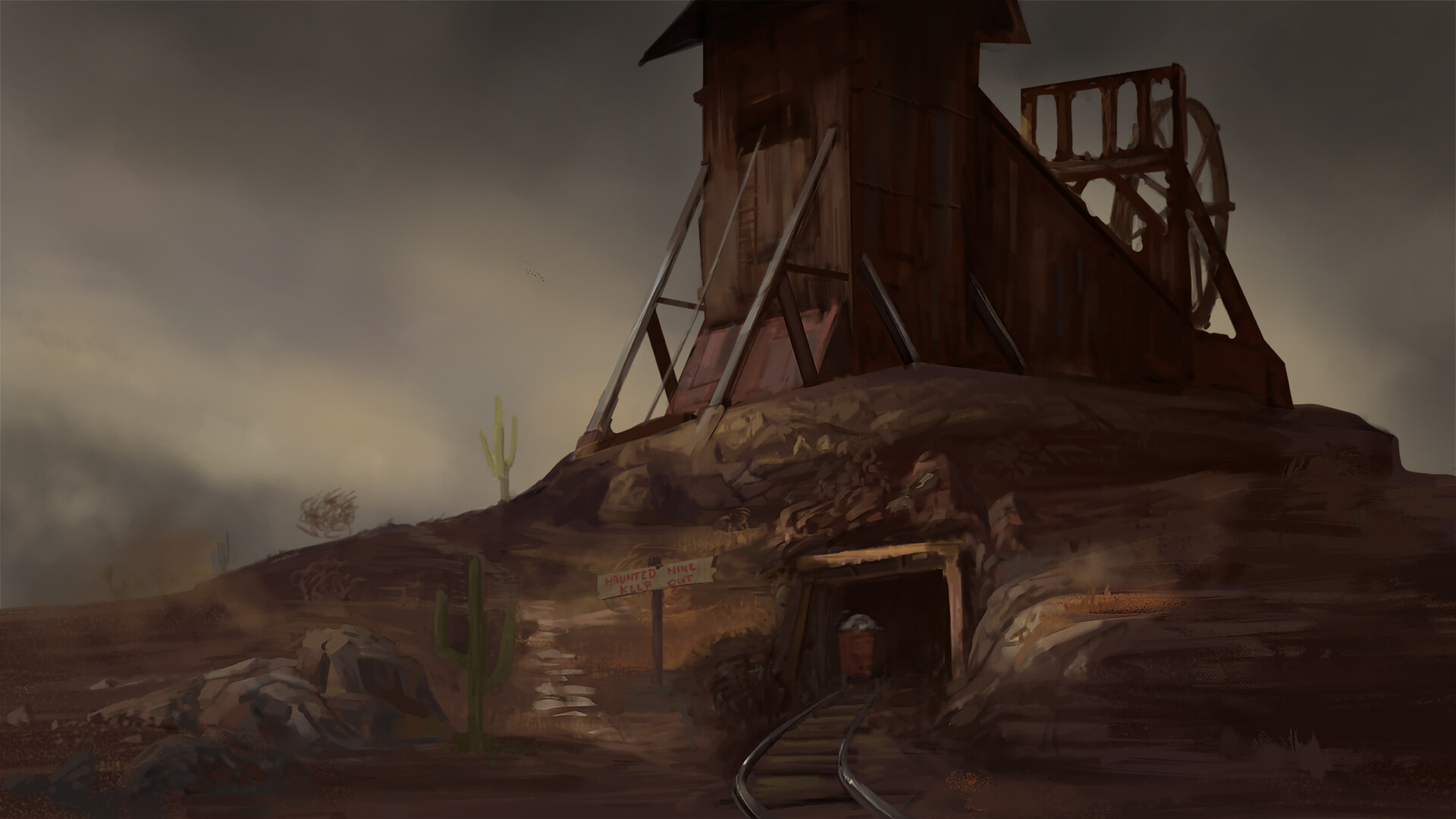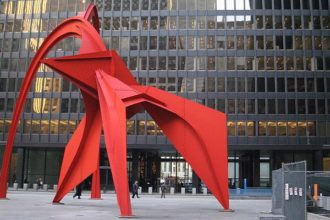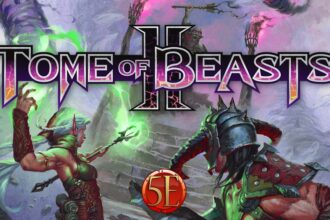How to create a story through your dungeon, Part 1

Fighter: Why does this dungeon have a window that shows a bunch of rocks when it is clearly down in the middle of a mountain?
Artificer: There surely is a story to be told about this place. Didn’t you see the murals?
Bard: You mean those terrible paint marks on the wall? That’s not art! A skilled hand would never paint something so ugly.
Barbarian: You think you are so clever? Then who is it that did that painting?
Bard: That was clearly painted by slaves who did their best, or something of the sort. I wouldn’t be surprised if this place used to be a castle from someone with servitude. But why is it underground?
I’ve talked quite a lot about level design in the past weeks. And I’m still not ready to stop. There’s definitely a lot to talk about it and there’s close to nothing around the internet comparing both videogame and TTRPG level design.
Today I wanted to talk about something that I just got to touch on my first Level Design Tips to improve your Games series. How can we make our dungeons more interesting? I’ve heard and read many people in WotC talking about making a dungeon another character in the story. This is profoundly done in Undermountain‘s Waterdeep: Dungeon of the Mad Mage or the Tomb of Annihilation in both the adventure with the same name or its first iteration (which is contained within the Tales of the Yawning Portal). How can we accomplish something like that?
The truth is, that for a dungeon to be considered a character within a story, or even without going that far, for it to be memorable, we need to give it a story. How was it created? Who was its creator? What is its purpose? Is there a story to be told by going through it? I’ll accompany you through my own steps on how to create a dungeon of this style.
Structure
To begin with, we need to define which sort of structure it is we are making. Is it a cave system? Maybe it’s a temple, catacombs, or a sewer system. This is what will give the first impression to the players. This is what will stick with them as they navigate the dungeon. Consider it in a way the cover of a book.
You never get a second chance to make a good first impression.
– Will Rogers
Making its exterior a broken down university but having torture chambers inside it can tell a whole story by themselves. It usually informs the player what the facade was to hide the dungeon, or what was it initially before it was occupied by monsters. If possible, write prose, something akin to the boxed text in modules giving a strong and thematic outside view of the dungeon. This will be the first lasting impression on your players, the prologue to your story.
The exterior or facade is not all can use about dungeon structuring to create a story. Both its location and design can say much more than bats the eye. Why would Moradin’s temple be located at the very top of a mountain instead of under it? Maybe those in charge of taking care of the dungeon wanted it to be difficult to reach, as well as a viewpoint to some other location. On the other hand, we have its interior design. A serpentine maze-like dungeon might have been created to protect certain rooms from those who enter without a map, whereas a linear dungeon with many rooms could have been a castle in the past.
Example: The Mines of Madness
The mines of Buraghar are located at the very bottom of the Buraghar mountain. Its floor is mostly covered by cart rails. Its path is mostly in an irregular manner. This shows that this place used to be a cavern. However, there are some straight paths going down that clearly show this place was also mined later in order to reach some materials deep down.
The prose I would use for when the player characters first arrive at it is the following one:
Upon reaching the lowest part of the hill a cavernous entrance to the mountainside is seen. Wooden planks sustain the rocks from collapsing in front of it and some iron minecarts are thrown to its side. Torch sustainers are placed to the side of its tunnel, but they all seem long unused. A nervewracking coldness comes from within. This place seems long abandoned.
Construction materials and art
What are the walls, the ground made out of? Is part of the dungeon constructed with smoothed stone while the rest of it remains cavernous? A cavern entry inside a long-forgotten mausoleum shouts for a story to be told. Why is the ground made out of obsidian? By choosing the materials with which a dungeon is made, you are creating implicit or emergent information for the players. You can play with this as I stated in the examples above. Why would a window be located inside a cave system if it is not showing anything? Why is a waterfall inside an abandoned castle? This will be the questions that the players will ask themselves, making the dungeon more interesting when you provide the answers.
Decoration and art is another very important topic. Having art inside a dungeon means some intelligent being lies or use to be inside it. If it is surprisingly clean for the place it is in, you are contrasting with the rest of the dungeon; in other words, disrupting paradigms. A big statue portraying a triton inside a mountain cave system might mean that deep down there could be some water connecting to the seas? A mural showcasing a war might be showing the great stories of Karegos the half-elf Conqueror. In the mural, Karegos is wielding a golden lance. Could that be hidden with its corpse? There you’ve not only got a story but a possible clue of the treasures remaining ahead.
Example: The Mines of Madness
- The walls in this mine clearly illustrate that the path forward was mined. Some smoothed walls are seen far into the mine.
- The face of an old dwarf is chiseled within the wall. Its eyes are made out of rubies. This statue is from Egrondth, dwarven god of mining, and easily recognizable for its bright red eyes.
- A fountain of lava. The lava pours from an obsidian dwarven face chiseled into the wall, precisely from its scar on the side. Its eyes made out of white topaz. This statue is from the duergar champion Korrog. This means that while mining the dwarves surely encountered a duergar settlement, becoming part of the dungeon.
- The floor has a gargantuan carpet that illustrates a war between the duergar and the dwarves. On the corner of it, the figure of Egrondth is depicted stabbing Korrog in the back. A true act of cowardice.
Monsters
Part of the level design includes the monsters that make an appearance in it. At most times, the presence of a monster in a dungeon alters its design or surroundings. Constructions might hint you on which monsters are to appear, but monsters can also give clues of what might appear later in the dungeon design-wise. At the same time, these monsters can also be used as part of the story to be told. If a medusa is hidden inside a temple of Pelor, could that mean that the medusa venerates Pelor? Or maybe it just petrified all people who guarded the place and uses the temple as its lair.
Example: The Mines of Madness
There’s obviously going to be duergars in here. We could even have many of them, with different weapons. We have already established that they took the mines once the dwarves reached the settlement mining. We’ll drop some dwarves as slaves as well. Now, let’s have a third party enemy be here as well: mind flayers. After the duergars took the dwarves as prisoners, the mind flayers appeared and transformed every one of them into their own thralls. After this, the mind flayers made all dwarves and duergars create a path to an elder brain by mining their way through.
These are just about half the things that are necessary for a great dungeon in terms of level design. If you liked this article and are willing to get the complete idea on how to create them make sure to drop a comment and stay tuned for the next article!






